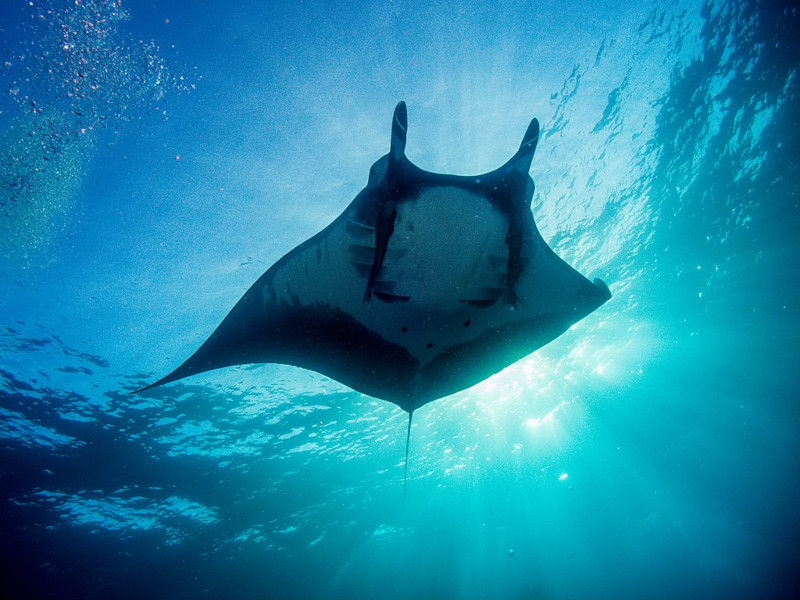

They are isolated most of their life, taking very little interest in each other except for mating. Sometimes, it can be a short distance and other times they are traveling huge distances in order to find enough food for survival. They continue to move around to find food. They will eat what they must in order to survive. Plankton make up most of their diet but they are quite opportunistic. Most of the feeding takes place at night for the manta ray. They do spend time together for mating purposes and then go their separate ways again. They live most of their life isolated and migrating. They have a flat body that is flexible as it consists of cartilage rather than bone. They seem to be able to hide quite well from predators at the bottom of the water in the sediment. One of the prime locations where you can see lots of them is the Western coast of Australia. While the manta ray is usually going to live an isolated existence, during certain migration times of the year they are found in locations in large numbers. They also have to migrate due to the temperature of the water during certain times of the year. They are migrational and will travel any distance that they need to in order to find food and shelter. Others live in the subtropical and tropical regions that offer them warmer waters close to the shore in the coral reefs. They do need to move to the cost regularly though for cleaning stations. Some of them live in the ocean in the deeper waters so that they can be warm.

The manta ray has a vast range of locations where they can survive. This unique pattern is a great way to find a particular manta ray that they are researching. They also have individualized markings and designs that allow them to be identified by experts. They are dark colored, including shades of black, blue, gray, and brown. The overall size depends on the species and also on their location. They can weigh as much as 2,900 pounds and be up to 23 feet wide. They don’t have any teeth in the upper jaw. They also have lots of teeth on the lower jaw area it can have up to 18 rows there. They have a round body, wings on the sides, and outward lobes from the front of a very large mouth. In Spanish that means cloak or blanket, and the name is the result of a type of trap that was once used to capture them.Ĭonservation Status VulnerableIt is hard to confuse the manta ray with anything else in the waters due to the unique body design that they feature. The name for these aquatic creatures stems from the word manta. INTRODUCTION TO MANTA RAYSYou may hear the manta ray referred to by many different names. Feeding, habitat, distribution, reproduction, anatomy and more. Facts about Giant Manta Ray and Reef Manta Ray. MANTA RAYMANTA RAY FACTS AND INFORMATIONMYLIOBATIDAE FAMILY Manta Ray Facts and Information.


 0 kommentar(er)
0 kommentar(er)
